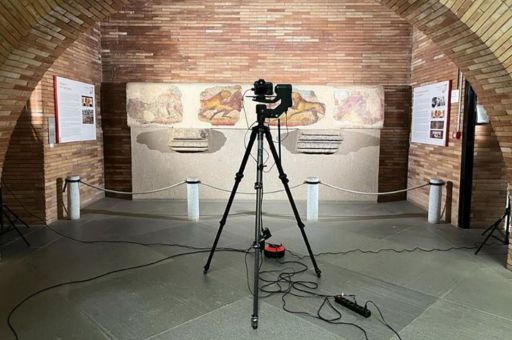The project, financed with almost half a million euros from the Plan for Recovery, Transformation and Resilience, allows more than 200 high-resolution virtual tours of the 16 museums managed by the Ministry of Culture.
TDB keeps you informed. Follow us on Facebook, Twitter and Instagram
High-resolution virtual tours
The Ministry of Culture is extending online access and dissemination of the sixteen state museums it manages directly in different parts of Spain. From now on, they offer new virtual tours in high resolution, a project within the framework of the Recovery, Transformation and Resilience Plan, which has received an investment of 478,880 euros from European funds.
The new virtual tours, developed with Second Canvas technology, allow free visits to the museum collection and exploration of the rooms with super-zoom, as well as access to new content in different formats such as explanatory videos on the meaning and historical context of the pieces, sound documents or scientific or informative publications. In addition, 200 pieces have been selected that can be explored in detail thanks to high-resolution images, and which are accompanied by short stories created by the curators to discover their secrets.
The National Museum of Underwater Archaeology ARQVA, in Cartagena (Murcia); the National Archaeological Museum, the Costume Museum, the Sorolla Museum, the Cerralbo Museum, the National Museum of Decorative Arts, the National Museum of Romanticism, the Museum of America and the National Museum of Anthropology. Centro de Investigación del Patrimonio Etnológico, the Museo Sorolla, the Museo Cerralbo, the Museo Nacional de Artes Decorativas, the Museo Nacional del Romanticismo, the Museo de América and the Museo Nacional de Antropología, in Madrid; the Museo Nacional de Arte Romano, in Mérida (Badajoz); the Museo Nacional y Centro de Investigación de Altamira, in Santillana del Mar (Cantabria); the Museo del Greco and the Museo Sefardí, in Toledo; the Museo Nacional de Cerámica y Artes Suntuarias ‘González Martí’, in Valencia; the Museo Nacional de Escultura and the Museo Casa de Cervantes, in Valladolid; are the 16 state museums under the direct management of the Ministry of Culture that will now have this new way of being visited.
Virtual tours and information in different formats
A total of 1,623 panoramic views of rooms and spaces have been digitised in the 16 museums. For example, the National Archaeological Museum shows more than 400 panoramas, and the National Museum of Roman Art has more than 200. Each super-high-resolution image of a panorama is obtained by taking and combining dozens of high-resolution photographs of each room. In total, more than 46,000 high-resolution photographs of the rooms have been taken.
The virtual visits are completed with 310 points of interest that allow access to information in different formats such as videos or audio related to the pieces and spaces of the museum. Each virtual visit also has a ‘Welcome Tour’, a voice-over and subtitled introduction that takes the virtual visitor through the rooms, putting them in context before the free visit.
Inadvertent details and little stories
The super high-resolution images allow visitors to approach the pieces in a way that is not possible in a face-to-face visit and with a naked-eye examination. The digitisation has been carried out with MadpixelROB, a robotic and computerised capture system with shooting assistance systems, which has made it possible to capture images with Ultra HD resolution (245 megapixels) and gigapixel resolution (1,000 megapixels) of the pieces in the same rooms, without the need to take them down or move them.
The flexibility of this system has also made it possible to adapt to the different formats of the pieces and to digitise paintings, mosaics, textiles, furniture, carvings, plasterwork and archaeological remains of different sizes, from 30 centimetres to pieces of several metres, such as large paintings, murals, façades or large ceilings.
For example, in the Sephardic Museum in Toledo, the smallest piece digitised was a Bar Kojba coin, barely 20 millimetres in diameter, while the largest was the East Wall of the Synagogue of El Tránsito, measuring 9.5 x 16 metres.
In addition, some pieces have also been photographed with infrared gigapixel technology that allows details such as repainting or small irregularities in the canvas to be appreciated, as in the case of ‘El Salvador’ in the El Greco Museum in Toledo; ‘Satira del suicidio romántico’ by Leonardo Alenza in the Museo del Romanticismo in Madrid; and the ‘Autorretrato’ by Joaquín Sorolla on display in the Museo Sorolla in Madrid.
